House Sparrows were introduced to Australia during the mid 1800s by settlers desperately trying to recreate their homeland. Acclimatisation Societies introduced many species including rabbits, foxes, starlings, blackbirds, songthrushes, skylarks and noxious weeds: they wanted to hunt foxes and harvest blackberries while listening to familiar birdsong.
I was inspired to post House Sparrow images after reading that the serious and mysterious decline they have suffered in the UK equates to 50 birds being lost each hour – what are we doing to our world? The figure astounds me, especially as no one understands why, although cats and pollution have been implicated.
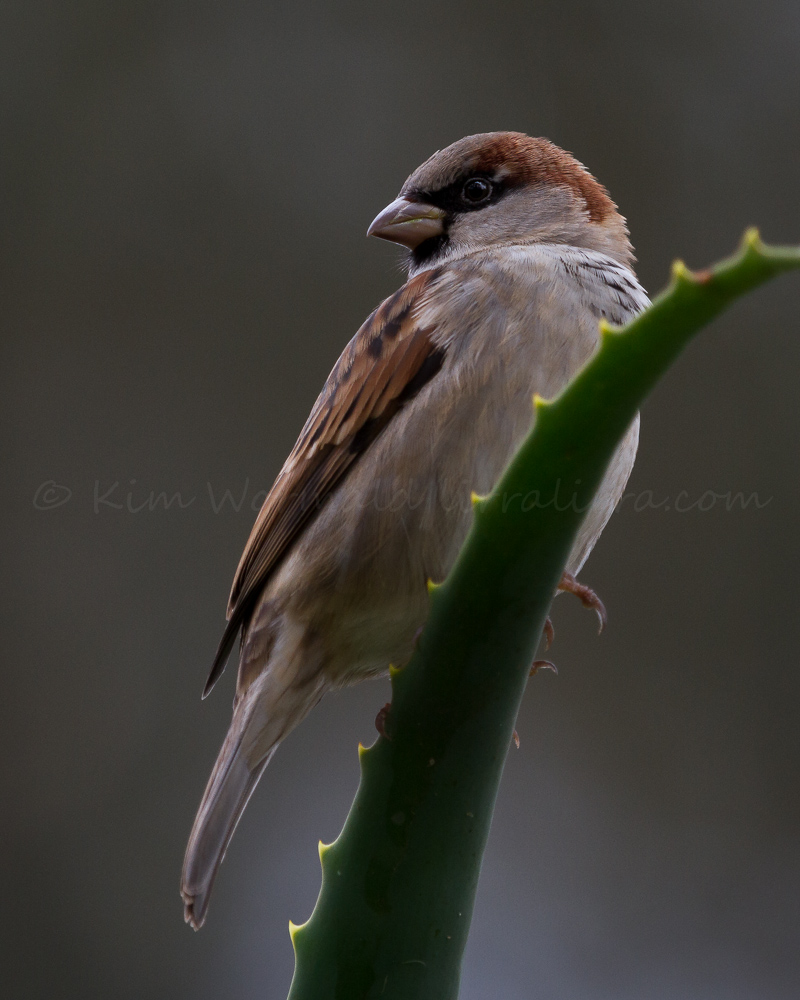 House Sparrow (Passer domesticus) – male
House Sparrow (Passer domesticus) – male
Canon 7D, 100-400mm L IS USM, 1/250, f5.6, ISO 400, focal length 330mm
House Sparrows are 15cm long and weigh 27g (that’s three times the weight of the Spotted Pardalotes in the previous post which you can visit here). Sparrows eat a wide range of foods and most of us have tossed crumbs to them when they join us at cafes. Male sparrows are boldly marked with a black face, black bib and upperparts of black and brown.
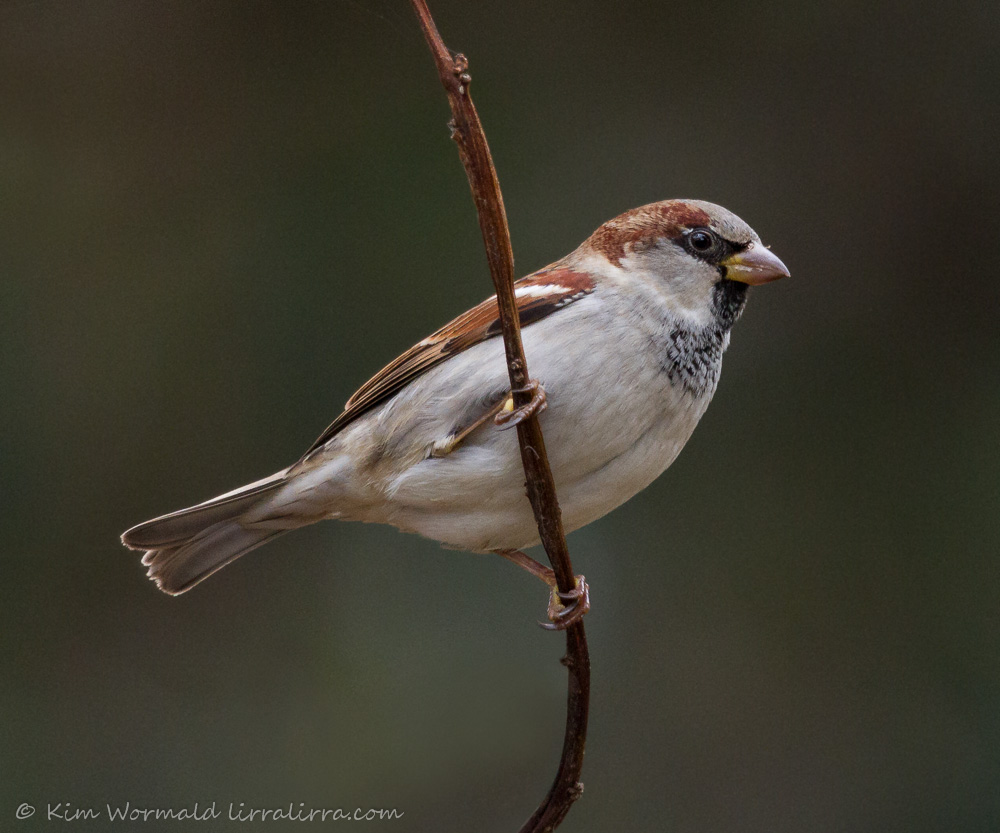 House Sparrow (Passer domesticus) – male
House Sparrow (Passer domesticus) – male
Canon 7D, 100-400mm L IS USM, 1/320, f5.6, ISO 1600, focal length 390mm
Sparrows are a well-established pest species in eastern Australia causing damage to orchards and market gardens. They are not present in Western Australia as the Nullarbor Plain has proved an effective barrier. House Sparrows prefer to live close to human habitation and are not inclined to cross vast open areas; any that have appeared in WA have been systematically destroyed.
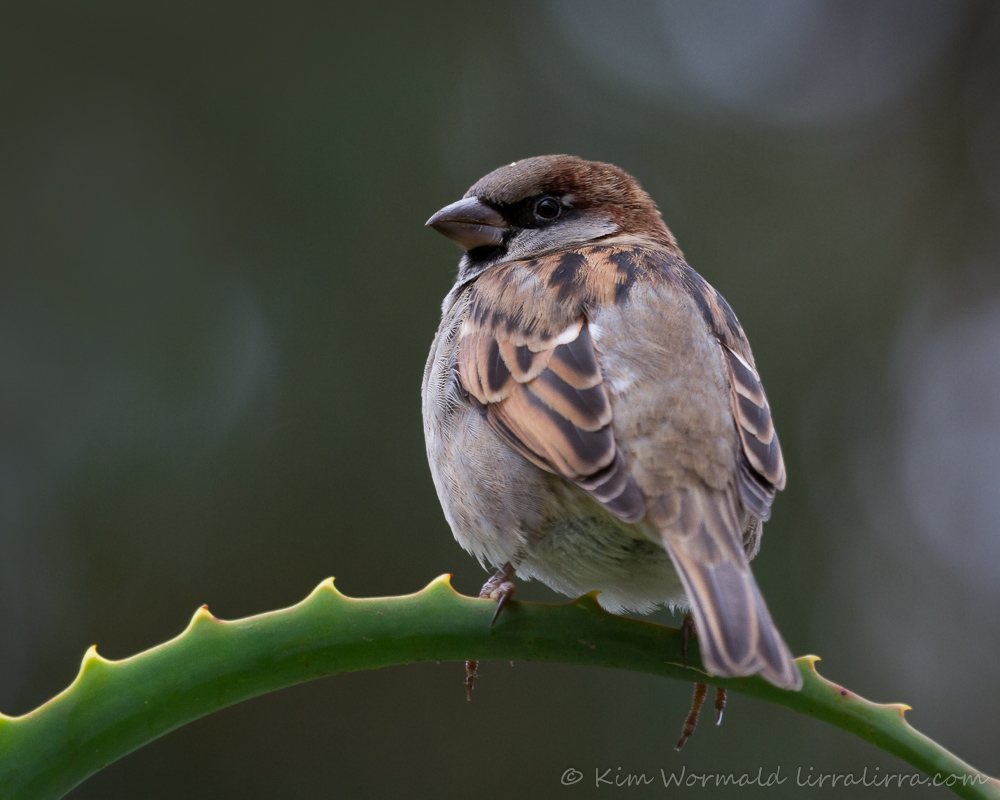 House Sparrow (Passer domesticus) – male
House Sparrow (Passer domesticus) – male
Canon 7D, 100-400mm L IS USM, 1/250, f/5.6, ISO 500, focal length 375mm
The male sparrow’s black bib is clearer in the image above. The bib extends during the breeding season at which time their bills turn black. When I was conducting regular surveys for the Atlas of Australian Birds I often saw House Sparrows in my garden but when neighbours removed an old stable the sparrows disappeared and have not returned.
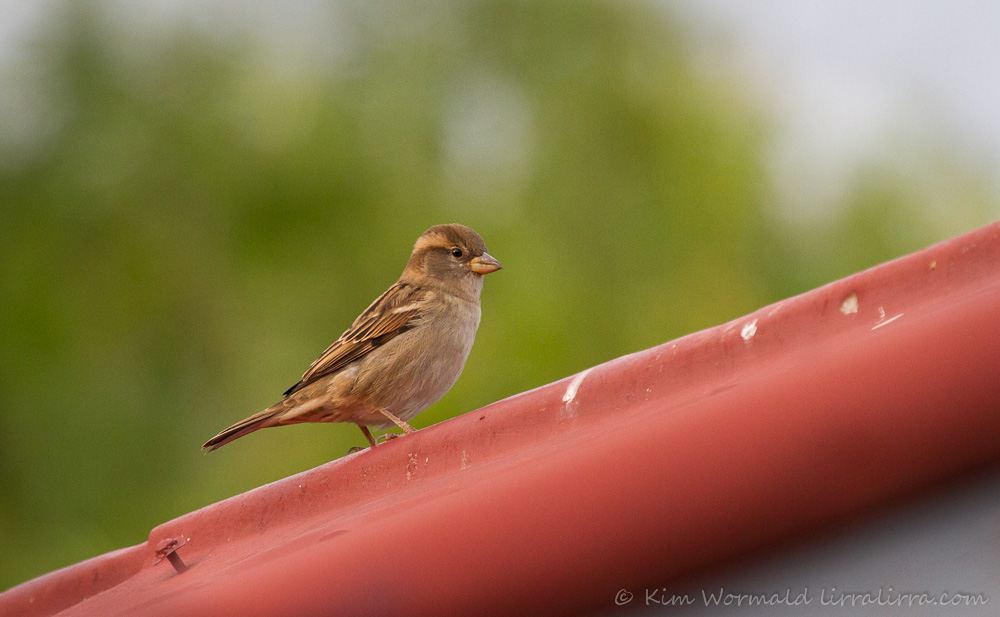 House Sparrow (Passer domesticus) – female
House Sparrow (Passer domesticus) – female
Canon 7D, 100-400mm L IS USM, 1/400, f7.1, ISO 1600, focal length 400mm
Female House Sparrows are paler and browner than males with a distinctive buff eye stripe. The image above was taken at the Woodlands Homestead where I tried to get images of sparrows on buildings that were brought over from the UK during the mid 1800s – they seemed to belong together.
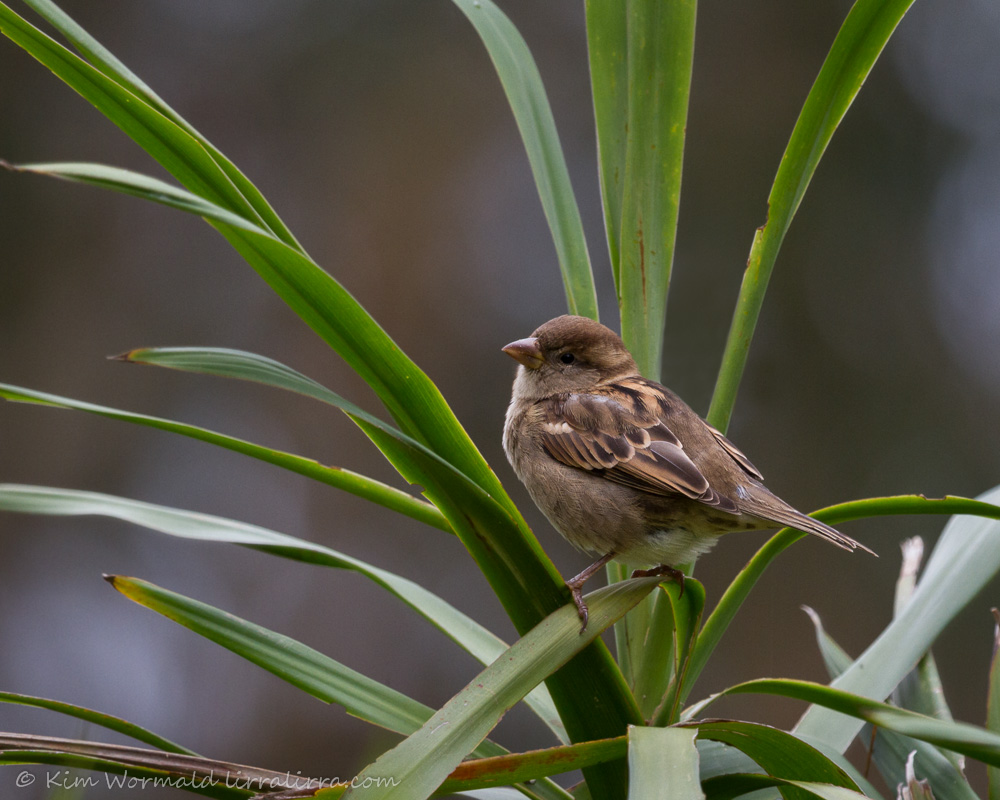 House Sparrow (Passer domesticus) – female
House Sparrow (Passer domesticus) – female
Canon 7D, 100-400mm L IS USM, 1/200, f5.6, ISO 500, focal length 400mm
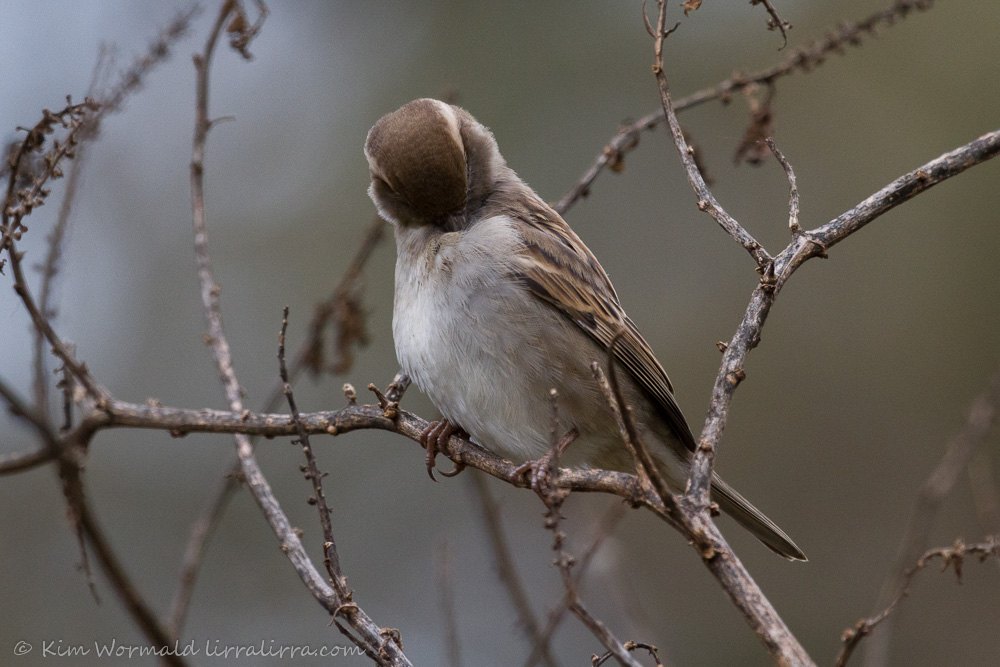 House Sparrow (Passer domesticus)
House Sparrow (Passer domesticus)
Canon 7D, 100-400mm L IS USM, 1/320, f5.6, ISO 1600, focal length 380mm
I like the misty look in the high ISO image above as the female preens herself. It seems ironic that these birds are in serious decline in one hemisphere and unwelcome in the other.
Happy birding, Kim
NB It is now possible to receive a weekly email letting you know that lirralirra has been updated – just add your address to the ‘Subscribe to email’ box above right.
Also, I recently added a Facebook ‘like’ button. Thank you to all ‘likers’ – I like you too!

[…] House Sparrows were flitting around the frogmouth, darting in and out of the enclosure and helping themselves to birdseed. A while ago I posted about the introduction of sparrows to Australia by Acclimatisation Societies, and about their rapid and unexplained decline in the UK. I was fascinated by readers’ comments and emails. If interested (or uninterested come to think of it), this link will take you to the post: House Sparrows […]
Hello, can you tell me where you are (general area) I am in Parramatta NSW and only realised recently that I haven’t seen a sparrow in years. I am saddened and ashamed that it took me so long to notice. I have read they are endangered in Australia as well. I think they are beautiful.
Hi Georgie, it is odd that such an adaptive species is experiencing such a significant drop in numbers. Let me know if it is okay to send you an email, my address is available on the ‘contact’ page. I look forward to hearing from you.
Oh he’s so cute!
I love his little head. The fifth picture is really beautiful.
Regards Kim.
I’m glad you like the sparrow Nathalie and thanks for letting me know your thoughts about the fifth image, much appreciated.
I have a real soft spot for House Sparrows, they are so gentle and so photogenic.
Your photos of them are so lovely, Kim.
I think I recognise that first little sparrow…
I took his photo too, I like your photos better…
He is a famous little fellow! I’m glad you like the birds and images. I’ve seen many of your photographs Carole and bet your sparrows were fantastic
House Sparrows are great little birds and so adaptable. There is some discussion about buildings being too neat with no exposed external rafters for nesting. I love to hear them when I’m watching TV. It’s often behind someone talking to the camera in the middle east and Europe.
Love the photographs.
Mal
They are remarkably adaptable, which makes me wonder even more what is happening to them in the UK.That’s a very interesting point about buildings being too neat – wouldn’t it be great if architects designed buildings that specifically provided habitat for birds, instead of the ‘hot foot’ mentality.
We have rather a lot of sparrows who roost in the crab-apple and nest in the wisteria. And I will freely confess that I am fond of them. It is not their fault that they were introduced here. And, given the dramatic decline in their numbers in the UK I am happy to think that they are flourishing somewhere.
That sounds lovely EC and you’re right about it not being their fault they were introduced. I wonder if it’ll ever come to the point when they’re taken from here to be reintroduced to the UK.